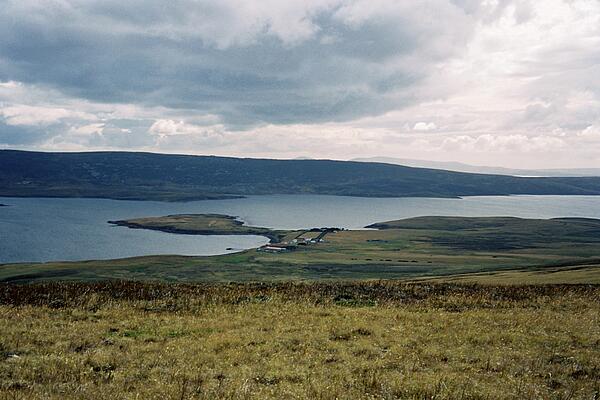The Landings at San Carlos Bay
The ships belonging to the British Task Force began landing troops at San Carlos Bay in the Falkland Islands on 21 May, 1982, led in part by Brigadier J H Thompson of the Royal Marines.
Ships carrying British troops began landing at San Carlos Bay in the Falkland Islands on 21 May 1982, following orders from London. Among the men arriving at the bay was 3 Commando Brigade, which was led by Brigadier J H Thompson, Royal Marines and assisted by Colonel T Seccombe, Royal Marines. Other troops landing included 40, 42 and 45 Commando and soldiers from 2 Para and 3 Para, Parachute Regiment.
London had given orders to secure the beachhead from Argentine attack and to ensure that as many troops and essential supplies as possible were landed safely at San Carlos Bay. Men from the Special Forces units were immediately sent out to search for and deal with any threats from nearby Argentine forces, in order that the landings were not interrupted and troops were not put at risk from the enemy.

These units launched an attack on the enemy forces based north of the bay at Fanning Head, as this location gave the enemy a good view of San Carlos Bay, therefore making them an added threat to the landings. The attack took place with the British men coming in on helicopters and using GPMG’s, supported by HMS Antrim gunfire. Following the attack, the enemy soldiers were offered the chance to surrender but would not do so. In total, 11 Argentinean soldiers lost their lives in the attack, while six were captured as prisoners of war and the rest fled from the scene. Attacks backed up by gunfire from HMS Ardent were also carried out on the banks of Argentine men located close to Darwin, which lay south of the bay. Each of these attacks happened as the Task Force was closing in on San Carlos Bay with its fleet of ships, troops and supplies.
In the first British landing at San Carlos Bay (Blue Beach), 40 Commando, 3 Commando Brigade HQ and 2 Para arrived, while the second phase of the landings saw 45 Commando and a range of artillery and logistic units land at Ajax Bay (Red Beach). Finally, Port San Carlos (Green Beach) saw the arrival of 42 Commando, 3 Para and artillery units.
Overall, the Task Force landings were seen as a major success as all the 2,400 troops and supplies that were needed arrived safely on shore. However, a number of ships were lost in the landings, which was a real blow for the British defence. Small transport ships were stationed in San Carlos Bay while big escort vessels were stationed in the Falklands Sound, and all of them were clear targets for air attacks by the Argentine troops. The British set up twelve Rapier missile systems close to the bay in order to ward off any attacks, however the travelling had altered these systems for the worse and they took a long time to become operational and provide the protection they were meant to. Alongside ships, two Gazelle helicopters were also lost as a result of Argentine Marine gunfire.
Following the landings, Brigadier Thompson was set to work moving his men to Port Stanley, the capital of the Falkland Islands. The majority of the men had to travel there on foot carrying their supplies, ensuring a long, tiring journey. In terms of next steps, Thompson ordered 2 Para to head south to launch attacks on the enemy based at Goose Green and Darwin, while the Royal Marines were told to head east to do battle with the enemy forces at Two Sisters and Mount Harriet. Meanwhile, 3 Para were busy attacking at Mount Longdon.
See also: San Carlos Waters
MLA Citation/Reference
"The Landings at San Carlos Bay". HistoryLearning.com. 2026. Web.
